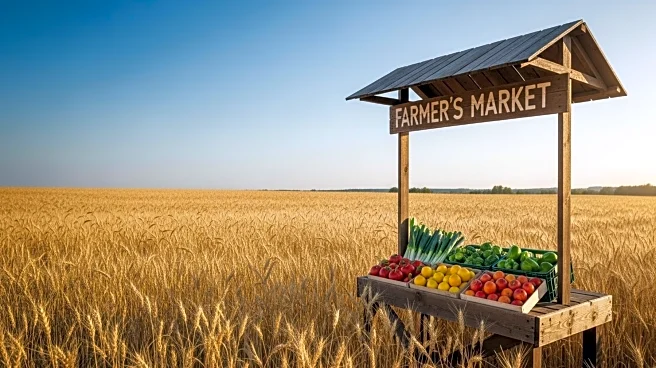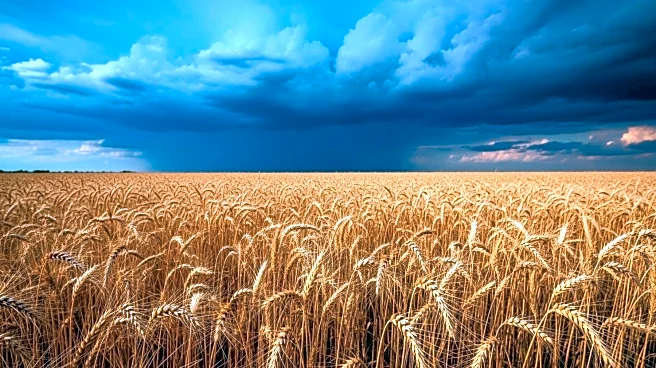What is the story about?
What's Happening?
The USDA has reported a 25% decrease in farm profits over the past two years, yet farmland values have only seen a modest decline. This comes after farmland values reached all-time highs in 2023. Rabail Chandio, an assistant professor and extension economist at Iowa State University, expressed concern that a significant drop in farmland values could indicate deeper issues within the agricultural sector. The Iowa State University Land Value Survey, which includes insights from appraisers, brokers, lenders, farm managers, and landowners, is expected to show a slight decline in land prices, reflecting tightening farm incomes. Despite these challenges, the recent Freymann land auction in Iowa demonstrated that people are still willing to pay market value for farmland, with some parcels selling for as much as $18,000 per acre.
Why It's Important?
The modest decline in farmland values, despite significant drops in farm incomes, highlights the resilience of the agricultural sector. Farmland is often seen as a stable investment, and its value is one of the last to decrease during economic downturns. This stability is crucial for farmers who rely on land as a key asset. However, the potential decline in land values could signal broader economic challenges for farmers, particularly as they face high costs and low crop prices. The situation underscores the importance of monitoring land values as an indicator of the health of the farm economy, which is vital for rural communities and the broader agricultural industry.
What's Next?
The upcoming Iowa State University Land Value Survey will provide a current assessment of land prices, offering insights into the economic conditions facing farmers. As farm incomes continue to tighten, stakeholders will be closely watching for any significant changes in land values. Additionally, the Trump administration's plans to provide financial aid to farmers once the government shutdown ends could offer some relief. However, long-term solutions will require opening new markets for U.S. agricultural products, reducing reliance on government aid, and addressing trade tensions that impact farmers' ability to sell their goods.
AI Generated Content
Do you find this article useful?













